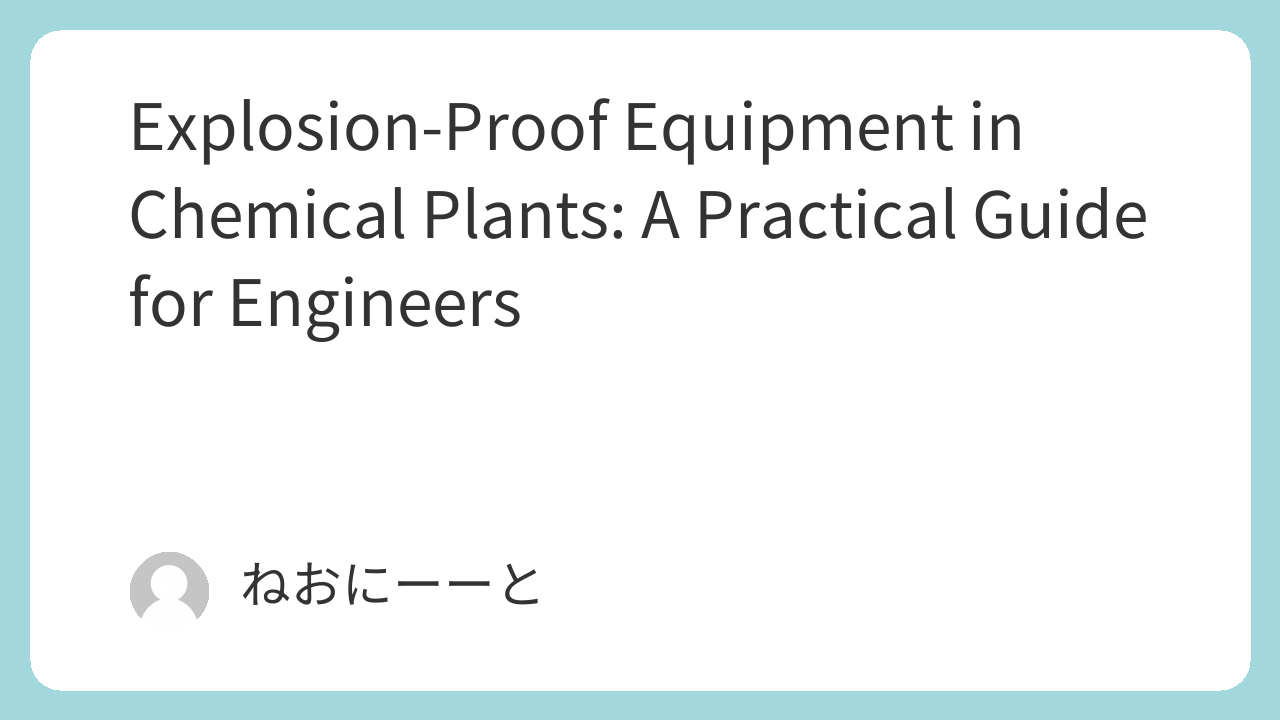Explosion risks are an unavoidable part of working in chemical plants, especially where flammable gases or vapors are handled. Mechanical and electrical engineers involved in plant design or maintenance must understand the types of explosion-proof (Ex) equipment, how they are classified, and how to choose the right protection methods for each hazardous area.
This article provides a clear and practical overview of explosion protection structures, including flameproof (Ex d), increased safety (Ex e), and intrinsic safety (Ex i). We also cover how to read Ex markings, understand international standards, and make informed equipment selection decisions based on zone classification and gas groups.
1. Why Explosion-Proof Equipment Matters in Chemical Plants
- Flammable gases, vapors, and dusts are common in chemical manufacturing
- Ignition sources (e.g., electrical sparks, hot surfaces) must be controlled
- Explosion protection ensures personnel safety, equipment integrity, and regulatory compliance
2. Main Explosion Protection Types and Their Use Cases
| Protection Type | Description | Common Applications |
|---|---|---|
| Flameproof (Ex d) | Enclosure withstands internal explosion without transmitting to the atmosphere | Motors, light fixtures |
| Increased Safety (Ex e) | Prevents arcs/sparks and limits surface temperatures | Terminal boxes, junction panels |
| Intrinsic Safety (Ex i) | Limits energy to prevent ignition even in fault conditions | Sensors, instrumentation signals |
- Other methods (Ex o, Ex q, Ex p) exist, but Ex d, Ex e, and Ex i are the most widely used
3. Understanding Explosion-Proof Markings (Ex Codes)
Example: Ex d IIB T4 Gb
- Ex: Certified explosion protection
- d: Protection type (flameproof)
- IIB: Gas group (medium-level explosive gases)
- T4: Temperature class (max surface temp ≤ 135°C)
- Gb: Equipment protection level (suitable for Zone 1)
Knowing how to decode these markings is essential for selecting compliant equipment.
4. Technical Standards vs. Design Guidelines
- Technical standards define minimum legal safety requirements (e.g., NEC, IEC, ATEX)
- Design guidelines or construction standards provide detailed methods to achieve compliance (e.g., IEC 60079 series, UL, ANSI standards)
- Compliance often requires meeting both
5. Key Factors When Selecting Explosion-Proof Equipment
- Hazardous area classification (Zone 0, 1, 2)
- Gas group and temperature class
- Compatibility with existing equipment
- Certification standards (IECEx, ATEX, UL, CSA)
- Maintenance requirements and lifecycle cost
✅ Conclusion
Explosion protection is a critical aspect of equipment design and maintenance in hazardous environments. By understanding the main types of Ex protection, the meaning of Ex markings, and how to align equipment with international standards, engineers can ensure safe, compliant, and cost-effective solutions in chemical plants and other hazardous locations.
Whether you’re involved in specifying new systems or upgrading legacy equipment, a solid grasp of explosion-proof principles is essential for plant safety and operational success.

Comments